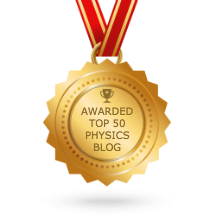 |
| Voodoo Science, by Bob Park, superimposed on Intermediate Physics for Medicine and Biology. |
I wonder what Park would say if he were alive today? I suspect he would be horrified. But I doubt he would have said that. He was not a whine-and-fuss sort of guy. His tools were humor, irony, and sarcasm. Here is what I imagine What’s New would have looked like this week.
What’s New, by Bob Park
Friday, April 25, 2025
1. VITAMIN A FOR THE MEASLES
The Texas measles outbreak continues. Over 600 cases have now been reported, which is more than for the entire year in 2024. Health and Human Services Secretary Robert F. Kennedy, Jr. encouraged parents to treat their children suffering from measles with vitamin A, and now children are suffering from liver disease because of vitamin A overdosing. Why don’t parents simply ask their pediatrician what to do? Because pediatricians are part of the conspiracy, of course!
2. IF WE IGNORE IT, IT WILL GO AWAY
The Trump administration is trying to undo all the progress fighting climate change that has accumulated over the last few decades. His thinking is: if you ignore climate change, the problem goes away. Besides, it’s all a HOAX! King Canute tried this. He commanded the tide to stop coming in. How do you think that turned out? Physics has a way of winning in the end, whether or not it’s politically popular.
3. LAB LEAK
The Trump administration has rewritten the covid.gov website to advocate for the lab leak hypothesis for the source of covid-19. Don't worry that the evidence is flimsy! If covid resulted from a lab leak, then it’s the scientists fault. Blame those arrogant liberal elitists like Fauci. But watch out for the next spillover event! (Can I interest anyone in some bird flu?)
4. LYSENKO
Back in the USSR, when Stalin was in charge, a crackpot named Lysenko took control of Russian science. He didn’t believe in modern genetics, regardless of the evidence. Russian agriculture collapsed and millions died. Here in the United States, we have our own version of the Lysenko affair. Trump is Stalin, RFK Jr is Lysenko, and vaccine hesitancy and climate change are genetics. I fear the outcome will be the same, which is bad for science and worse for humanity.
5. HOORAY FOR HARVARD
The NIH (remember that place that used to be the greatest biomedical research institution anywhere, ever?) has stopped funding grants to several universities, including Harvard. HARVARD! Apparently these universities will not cave in to Trump's ideological agenda. What will happen next? Who knows. Maybe Trump will be stopped by the Supreme Court. Maybe the House and Senate will decide they’ve had enough. And maybe, just maybe, it will be the end of American science.















